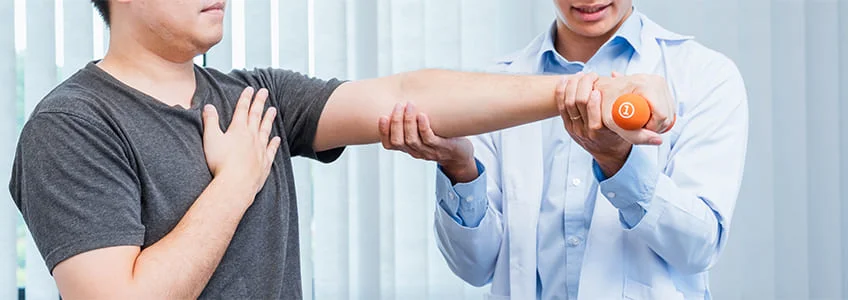Dr. Álvaro Velarde Sotres, international coordinator of the Sports Department at the Fundación Universitaria Iberoamericana (Iberoamerican University Foundation, FUNIBER), is participating in a study that analyzes the efficiency of three assessment tools: tensiomyography, functional movement screen, and counter movement jump in identifying the risk of sports injuries.
Sports injuries represent a significant challenge in the field of sports performance, affecting both the health of athletes and their performance. Early identification of risk factors is essential for implementing effective preventive strategies. Various tools have traditionally been used to assess injury risk, but their effectiveness and validity have been the subject of debate.
Previously, methods such as flexibility, muscle strength, and balance assessments have been implemented to predict and prevent injuries. However, the accuracy of these tools has been variable, and in many cases, they have not proven to be predictive of future injuries.
The study in question focuses on tensiomyography, a non-invasive muscle assessment tool, the functional movement screen method used to identify imbalances and limitations in a person’s fundamental movement patterns, and the counter movement jump, a vertical jump test consisting of a rapid downward movement before an upward jump, tools that have gained popularity in injury risk assessment. The novelty of this research lies in the systematic review of original studies that evaluate the diagnostic ability of these tools in the prevention of sports injuries.
To conduct this review, an exhaustive search of scientific databases was performed, selecting studies that investigated the relationship between tensiomyography, functional movement screening, and counter movement jump with the incidence of injuries in athletes. The methodological designs, sample sizes, and results obtained in each study were analyzed.
The results show that the counter movement jump is a valid and reliable test for monitoring athletes’ adaptation to training programs, as well as for detecting asymmetries and assessing neuromuscular fatigue. The functional movement screen can be used to detect asymmetries in athletes and has been shown to be negatively associated with lower limb injuries. Tensiomyography, on the other hand, is valid and reliable, can be used to monitor the effects of training, detect muscle asymmetries, provide information on muscle tone, and detect fatigue.
These findings suggest that the combination of tensiomyography, functional movement screening, and counter movement jump can provide a comprehensive assessment of injury risk, allowing coaches and health professionals to design more effective and personalized prevention programs. Despite these results, the study points to the need to use these sports injury prevention methods with caution and the need for further research to optimize results.
If you would like to learn more about this study, click here.
To read more research, consult the UNEATLANTICO repository.
The Iberoamerican University Foundation (FUNIBER) offers scholarships for the Master’s Degree in Sports Performance: Training and Functional Assessment. This master’s degree provides specialized knowledge in the field of sports performance, training, and functional assessment. Don’t miss this opportunity to boost your career in the world of sports. Enroll in this master’s degree and start achieving your goals!
